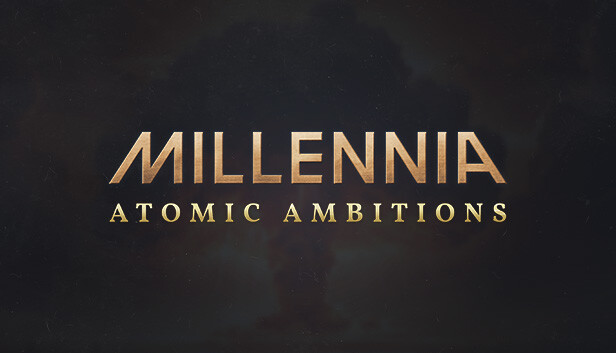In the realm of contemporary scientific inquiry, the field of nanoscience has burgeoned into a multifaceted discipline that intertwines physics, chemistry, and biology. Within this burgeoning landscape, Sagar Kumar’s *Atomic Ambitions* serves as a pioneering exposition, elucidating the intricate principles governing the nanoscale phenome. This article delineates the multifarious content readers can anticipate when delving into this substantive work, which offers both theoretical frameworks and practical applications that coalesce around the manipulation of matter at atomic dimensions.
At the outset, *Atomic Ambitions* embarks on a methodical exploration of the foundational concepts of nanoscience. Readers can expect a comprehensive overview of atomic and molecular structures, laying a robust groundwork necessary for understanding the behavior of materials at the nanoscale. The author elucidates critical theories pertaining to quantum mechanics, such as wave-particle duality and uncertainty principles, which are pivotal to the design and manipulation of nanomaterials. Here, the integration of theoretical insights with visual aids—such as diagrams and graphs—facilitates a deeper comprehension of complex ideas, aiding both novice and seasoned readers alike.
Transitioning from theory to application, the text delves deeply into the synthesis of nanomaterials, scrutinizing various methodologies including chemical vapor deposition, sol-gel processes, and ball milling. This section details the nuances of size-dependent properties that emerge as materials shrink, a concept crucial to the advancement of nanotechnology. A discussion on the implications of surface area-to-volume ratio, superparamagnetism, and quantum confinement is meticulously interwoven with practical examples—illustrating how these phenomena manifest in everyday applications such as drug delivery systems and photovoltaic cells.
In addition to theoretical and practical understandings, Kumar’s work embarks on an ambitious exploration of the ethical considerations surrounding nanotechnology. The text posits a compelling dialogue on the dual-use conundrum inherent in scientific research—the potential for technological advancement alongside the risk of misuse. Readers are encouraged to engage with critical questions regarding environmental impact, human health ramifications, and regulatory frameworks that govern the application of nanotechnology. This nuanced treatment compels readers to reflect on the societal ramifications of their scientific pursuits and to consider the moral responsibility that accompanies innovation.
Furthermore, the narrative navigates through the landscape of interdisciplinary collaboration that characterizes modern scientific endeavors. The need for cross-pollination between disciplines emerges as a fundamental theme; the author underscores collaborations between physicists, chemists, and biologists as essential for tackling complex scientific problems. Case studies exemplifying successful interdisciplinary research projects illuminate the tangible benefits of such synergistic efforts, showcasing how diverse teams have catalyzed groundbreaking advancements in fields ranging from renewable energy to materials science.
Amidst the theoretical exposition and ethical considerations, the text also unveils innovative applications of nanotechnology that hold the promise of transforming various sectors. Notably, Kumar details the strides being made in medicine, particularly in targeted therapies that harness nanoparticles to deliver drugs directly to diseased tissues, thereby mitigating collateral damage to healthy cells. The discussion extends to diagnostics, illustrating how nanotechnology has catalyzed the development of rapid and cost-effective detection methods for pathogens and biomarkers. Readers will find themselves captivated by the implications of nanotechnology in addressing global health challenges, alongside the promise of improved therapeutic outcomes.
In terms of sustainability, the work adeptly addresses the role of nanotechnology in combating climate change. Kumar delineates innovative approaches, such as nanostructured materials designed for carbon capture and sequestration. This section emphasizes the potential for nanotechnology to enhance energy efficiency and reduce waste, while also illuminating challenges regarding the lifecycle management of nanomaterials. The discussion of sustainability is further enriched by a thorough analysis of how nanotechnology can contribute to the development of sustainable materials, such as biodegradable nanoplastics, thus appealing to an environmentally conscious readership.
In a forward-looking perspective, Kumar ventures into the emerging trends within nanoscience and its prospective future trajectory. Anticipated innovations in fields such as nanoelectronics and biocompatible implants are explored, with a focus on the potential to revolutionize technology and healthcare. Readers are invited to contemplate the forthcoming challenges posed by rapid technological advancements, including the need for robust regulations and public discourse regarding the societal acceptance of nanotechnology. This foresight serves as an invitation for readers to ponder the next frontiers in science, encouraging a proactive engagement with the questions that will shape the future of the discipline.
In conclusion, *Atomic Ambitions* stands as a seminal contribution to the literature on nanoscience, offering a thorough and sophisticated exploration of its principles, applications, and ethical considerations. With its rich content interspersed with innovative case studies and critical reflections, this work not only informs but also inspires its readership to navigate the complex nexus of science and society. As Kumar deftly intertwines scientific rigor with ethical contemplation, readers are called to equip themselves with knowledge that empowers them to engage thoughtfully in the dialogue surrounding the atomic ambitions that shape our world.












